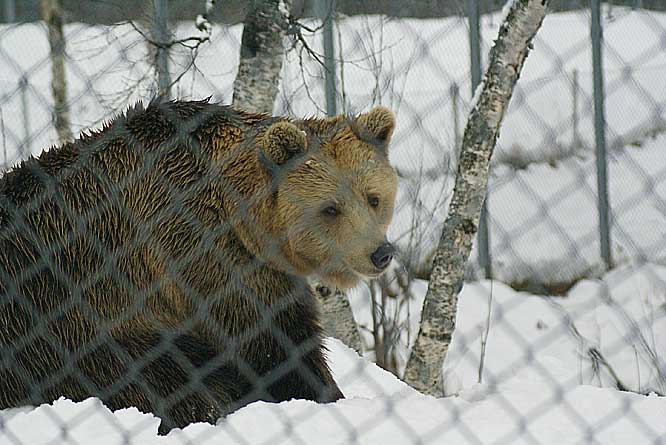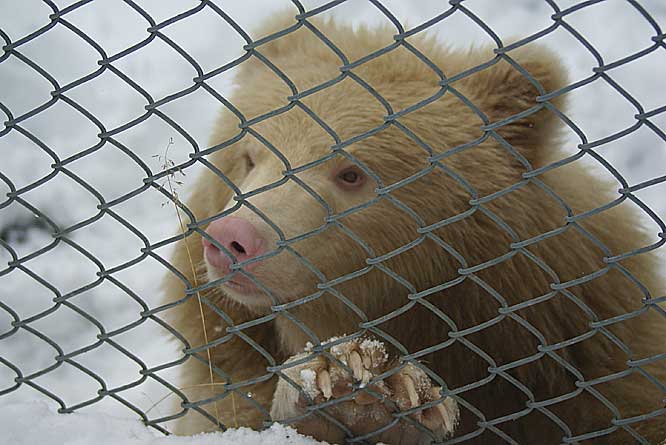European Brown Bear Brunbjorn at the Polar Zoo Norway
The Polar Zoo has four European Brown Bears a Mum and Dad plus two cubs. One of the cubs is an attractive albino. Their large enclosures are right at the top of the hill on the other side of the valley from the entrance.

Although it is called a brown bear the actual colour of its fur ranges from dark brown, red brown, almost black and a yellow-brownish. It is sometimes called the Common Brown Bear or the Eurasian Brown bear. Its scientific name is Ursus Arctos Arctos.
European Brown Bears were hunted to extinction in Britain by 500AD. Archaeological evidence of this species was found at the Star Carr Mesolithic site in Yorkshire. Bears were imported to Britain for entertainment and bear-baiting in the Middle Ages. They still live in the Arctic regions of Russia, Europe and in some southern mountain areas. Only about 15% of their diet consists of meat. It is very rare for them to attack humans unlike brown bears in America. It is believed that there are around 2000 bears in Sweden, 1200 in Finland, 700 in Estonia and 70 in Norway.

The Brown Bear is no longer seen as a threat but an asset that has to be looked after. They can bring in money from tourists eager to see a brown bear in the wild. The Romanian tourist trade sees the brown bear as a money-spinner, bringing in eco-tourists from around the world to see them. There are a number of lodges in Norway, Finland and Sweden offering Bear safaris Where tourists shoot bears with their cameras. The European brown bear is protected by the Bern Convention, but, even so, its numbers have to be controlled. Culling, under licence, is carried out by the Romanians, and the meat is used for human consumption and the hides sold on.
European Brown Bear cubs are normally born in January or February in the safety and warmth of the mother bear's winter den. They are suckled by the mother until April or May. She then leads them out in the world and teaches them how to forage for food. The cubs will stay with her for one or sometimes two years. This time period depends on when the female is ready to mate again.
Travel books

